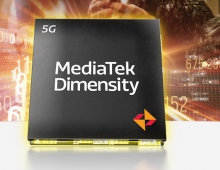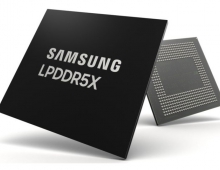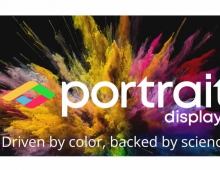
MediaTek Introduces Multimode Inductive and Resonance Wireless Charging Solution
MediaTek at CES announced the development of multimode receiver technology for inductive and resonant charging using in-band communications.
Traditionally, wireless charging has been done through tightly coupled technology, commonly referred to as inductive. MediaTek's solution has adopted loosely coupled technology, commonly referred to as resonance, and offers advantages over today's inductive approach. The major benefits include:
- charging devices with freedom of movement with easy, imprecise placement of the device
- charging multiple devices concurrently from a single affordable charger coil
- charging different sized devices with largely different power needs from the same charger
- charging different devices with vastly different form factors free of the need for precise coil to coil alignment
- charging devices across distances, through furniture or even walls
Along with the differentiated resonance solution MediaTek brings multimode receiver technology that enable users to charge their devices from existing inductive chargers or new resonance chargers.
MediaTek's multimode receiver wireless power solution employs another technology and that is the use of in-band communications for power control in both the inductive and resonant modes. MediaTek says the in-band communications provides reliable communications with greater simplicity and higher value than proposed Bluetooth implementations for resonance.
MediaTek also announced at CES its fifth generation of Smart TV platforms. MediaTek's 8-series chipset family consists of fully integrated SOCs designed for the next-generation UHD smart TVs.
The 8-series chipset family supports UHD resolution for HEVC codec at 60Hz implemented in hardware. The chipsets include a quad-core ARM processor in big.LITTLE configuration running up to 1.2 GHz, and Mali T624 GPU clocked at 500 MHz. This 8-series family also includes MediaTek'sPicture Quality (PQ) engine, which is now in its ninth generation.
MediaTek's 9th generation PQ engine supports scaling, color engine, noise reduction, sharpness engine, local dimming and backlight control.
This platform supports global standards for TV broadcast, multiple analog and digital I/O interfaces, in-house wireless connectivity technologies including 802.11ac, Bluetooth and NFC.
The 8-series chipset will find its way to commercial Smart TV products by late 2014.
- charging devices with freedom of movement with easy, imprecise placement of the device
- charging multiple devices concurrently from a single affordable charger coil
- charging different sized devices with largely different power needs from the same charger
- charging different devices with vastly different form factors free of the need for precise coil to coil alignment
- charging devices across distances, through furniture or even walls
Along with the differentiated resonance solution MediaTek brings multimode receiver technology that enable users to charge their devices from existing inductive chargers or new resonance chargers.
MediaTek's multimode receiver wireless power solution employs another technology and that is the use of in-band communications for power control in both the inductive and resonant modes. MediaTek says the in-band communications provides reliable communications with greater simplicity and higher value than proposed Bluetooth implementations for resonance.
MediaTek also announced at CES its fifth generation of Smart TV platforms. MediaTek's 8-series chipset family consists of fully integrated SOCs designed for the next-generation UHD smart TVs.
The 8-series chipset family supports UHD resolution for HEVC codec at 60Hz implemented in hardware. The chipsets include a quad-core ARM processor in big.LITTLE configuration running up to 1.2 GHz, and Mali T624 GPU clocked at 500 MHz. This 8-series family also includes MediaTek'sPicture Quality (PQ) engine, which is now in its ninth generation.
MediaTek's 9th generation PQ engine supports scaling, color engine, noise reduction, sharpness engine, local dimming and backlight control.
This platform supports global standards for TV broadcast, multiple analog and digital I/O interfaces, in-house wireless connectivity technologies including 802.11ac, Bluetooth and NFC.
The 8-series chipset will find its way to commercial Smart TV products by late 2014.





















